Ongoing explorations into the fate of ciphered disembodies during their slow fade into the electromagnetic night:
˜˜˜˜˜˜˜˜˜˜˜˜˜˜˜˜˜˜˜˜

˜˜˜˜˜˜˜˜˜˜˜˜˜˜˜˜˜˜˜˜
˜˜˜˜˜˜˜˜˜˜˜˜˜˜˜˜˜˜˜˜
Ongoing explorations into the fate of ciphered disembodies during their slow fade into the electromagnetic night:
˜˜˜˜˜˜˜˜˜˜˜˜˜˜˜˜˜˜˜˜

˜˜˜˜˜˜˜˜˜˜˜˜˜˜˜˜˜˜˜˜
˜˜˜˜˜˜˜˜˜˜˜˜˜˜˜˜˜˜˜˜
William S. Burroughs suggests that language often behaves like a virus as it passes from mouth to mouth, gathering microbes along the way: microbes provoking strange mutations that may express themselves through the most toxic utterances.
With the below acoustic amuse bouche dating from the year 2000, I propose that at certain times and at certain places, language may also behave like a fungus, a fungus that if left to its own urgent proliferation soon becomes entangled in the axons and dendrites of the human brain, leaving us with the severely impaired fluency.
I have experienced the fungal quality of language myself when on a hot day in the New York subway, I chanced to hear one departing passenger say to another: So you want to talk about squid? Then they were gone, leaving me in deep corn smut. For whether it was something in the actual voice, or some magical mycological chemical embedded in that precise arrangement of phonemes, it was only a matter of minutes before my entire brain was helplessly possessed by a numbing and relentless repetition of this one cruel sentence, in every stage of fungal bloom and decay — so you want to talk about squid?
Somehow, through instinct or intuition, I sensed that my only hope was to write down what I was hearing in my head, and as I did so, indeed, a squidlike form began to emerge on the page, a form that then became a score for a bit of fungal audiophony:
Sometimes, the best way to defuse loaded phrases is to stare them down. An early version of Evil Axis was commissioned by The Verb in 2001 as an “audio cartoon”; then recreated in a slightly adjusted version in 2006 for a series of live-to-air performances.
The piece is composed from a series of neologisms and noms de personne through a process of single letter rotation. The series of new words then became the basis for a narrative intended to defuse the word grenade, at least for a few moments.
Hereby donated to the Creative Commons: why oh why oh why are you so evil……
A RRR vinyl release from 1991. Extremely rare, though Principia Schizophonica was subsequently released on The Pleasure of Ruins cd, while How to Pronounce ‘Prosthesis’ was released on Tellus # 25. Both pieces have been broadcast countless times.
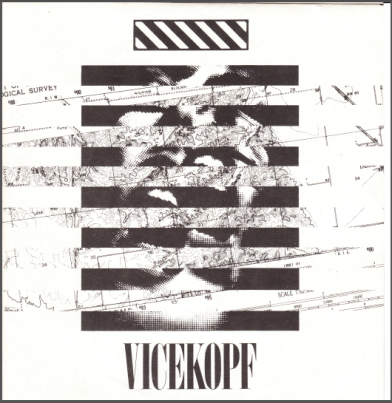
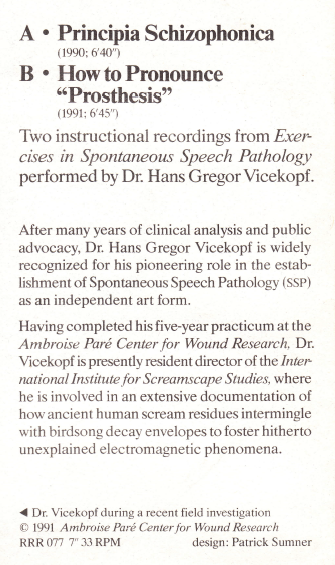
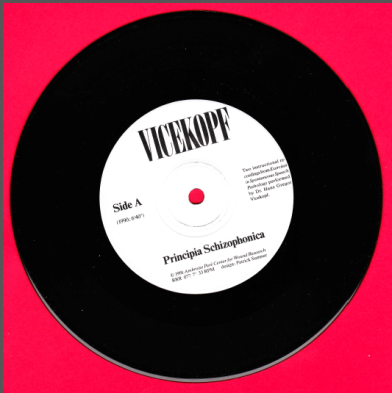
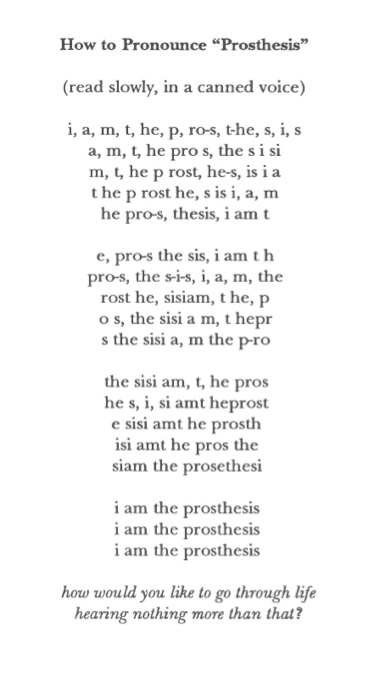

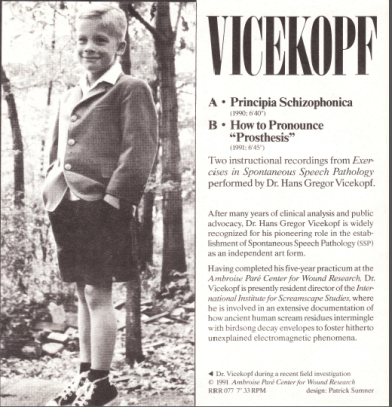
Another MINERVA EDITIONS release of a short docufiction made for the Miami New Music America Festival. Reptiles and wildfire coupled, like instinct and intuition; sometimes moving with each other, other times against, yet forever soaking wet and on fire.
Broadcast many times over in a variety of contexts, and now released into the digital everglades:
You will note the address for MINERVA EDITIONS. From 1987-1992, I lived in Philadelphia within walking distance of the abandoned Great Eastern penitentiary, Duchamp’s étant donnés, the Mütter Museum, and the Rodin portes d’enfer. Each had an influence on my thinking during those years and are still roaming around my brain.

WHAT DOES IT WANT/
Inspired by the book with the same title (by Rose Macauley, with remarkable photographs by Roloff Beny), I set out to conjure an acoustic ruin through the poetic disintegration of a chanted list of global ruins, using the technique of rhythmic cyclical “eruptions” that I had developed in Disorder Speech.
At the time, there was a good deal of heavy cultural theory about libidinal flows and “economies of pleasure” in the air during the late 1980s, an irresistible invitation for humor; thus I proposed a sort of radiophonic archeology of pleasure, unfolding (or degenerating) in real time.
With the exception of a tour guide speleologist and a few other documentary scraps, the only voice used is my own, through a variety of personae.
Commissioned by the brave New American Radio series, under the direction of Helen Thorington and Regine Beyer, The Pleasure of Ruins has been broadcast throughout Europe, Australia and North America, in all of its ruined pleasures:
The Pleasure was resuscitated with a variety of other castaways on a 1993 Staalplaat CD release. I have a small number of copies of the original MINERVA EDITIONS cassette release, available to serious collectors.
Let me here sing praises for Patrick Sumner, whose stunning photographs and design work enlivened the MINERVA releases, as well as the Staalplaat CDs. The photograph below shows the salvaged remnants of a house owned by Patrick, and Sheila Davies, burned during the terrible fire that rampaged through the Oakland hills in 1991.

A cassette release of short audio razorgrams made in 1984/85. During those early years between 1980-1985, I was intensely interested in analog editing; to this day, I remain convinced that there are qualities in the analog cut – a physicality of acoustic energy – not possible to simulate in the digital realm. Part of this might be explained with reference to the kinetic investment; editing for long periods of time is physically demanding and logistically complex, keeping track of dozens of slivers of audio tape that carried no searchable file names.
In production workshops, I recommend that all students learn analog editing, in the same way that photographers should all experience the joys of the darkroom. The artisanal nature of the analog editing process slows down thought, in a positive way. Processes that become too easy lead inevitably to lazy thinking and flaccid broadcasts.
The philosophical/poetic overtones of physical cutting also attracted me, as I developed ideas about the “woundscape”, and about the razor cut wound as an expressive opening, with a story to tell. In addition to ideas about the razor wound/cut, I became fascinated with cyclical structures of generational decay and improvised eruptions; one generation of voiced material would be copied and added to the montage, yet with several fresh spliced slivers of eruptive sound.
Through time, this process created an unusual rhythmic pattern, with an acoustic depth of field shaped by the subtle shadings of analog degradation across the generations, a result that I found (and still find) compelling.
Eva, Can I Stab Bats in a Cave explores the anomalies of live vrs. recorded voice, and also offered much fun in the studio as I learned to vocally replicate 1/4″ tape played backwards, which seemed a timely skill to have in 1984.
Several of these pieces were used in dances by choreographers such as Karen Bamonte and Susan Salinger; they were also included in audio art compilations released by Tellus and others.
Disorder Speech circulated very widely through the cassette underground; a few copies are still available, for serious collectors.
